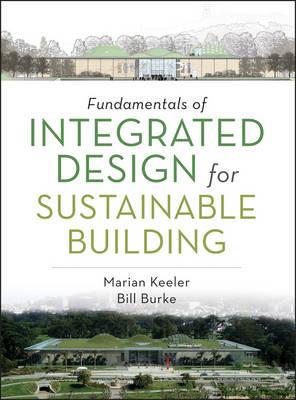Overview
"" Fundamentals of Integrated Design for Sustainable Building offers an introduction to green building concepts as well as design approaches that reduce and can eventually eliminate the need for fossil fuel use in buildings while also conserving materials, maximizing their efficiency, protecting the indoor air from chemical intrusion, and reducing the introduction of toxic materials into the environment. It represents a necessary road map to the future designers, builders, and planners of a post-carbon world."" - from the Foreword by Ed Mazria A rich sourcebook covering the breadth of environmental building, Fundamentals of Integrated Design for Sustainable Building introduces the student and practitioner to the history, theory and technology of green building. Using an active learning approach, the concepts of sustainble architecture are explained and reinforced through design problems, research exercises, study questions, team projects, and discussion topics. Chapters by specialists in the green movement round out this survey of all the important issues and developments that students and professionals need to know. From history and philosophy to design technologies and practice, this sweeping resource is sure to be referenced until worn out.
Full Product Details
Author: Marian Keeler ,
Bill Burke
Publisher: John Wiley and Sons Ltd
Imprint: John Wiley & Sons Ltd
Dimensions:
Width: 22.50cm
, Height: 2.50cm
, Length: 28.00cm
Weight: 1.046kg
ISBN: 9780470152935
ISBN 10: 0470152931
Pages: 360
Publication Date: 05 June 2009
Audience:
Professional and scholarly
,
Professional & Vocational
Format: Hardback
Publisher's Status: Out of Print
Availability: Awaiting stock

Reviews
...explains how different disciplines have an environmental impact on a sites. The writers insist that all professionals need to be educated and aware that hazardous products used in a home may affect the health of the people occupying the home or the structural integrity of the building. This book is a great reference about many fundamental issues, the do's and don'ts we should be aware of when dealing with a new site. It shows us how important it is to have a green vision when starting a design, and that involving other disciplines in your site approach will create an integrated and sustainable design. ( The Designer , Winter 2009/2010)
...explains how different disciplines have an environmental impact on a sites. The writers insist that all professionals need to be educated and aware that hazardous products used in a home may affect the health of the people occupying the home or the structural integrity of the building. This book is a great reference about many fundamental issues, the do's and don'ts we should be aware of when dealing with a new site. It shows us how important it is to have a green vision when starting a design, and that involving other disciplines in your site approach will create an integrated and sustainable design. (The Designer, Winter 2009/2010)
Author Information
Marian Keeler , Associate AIA, LeEED AP, is a San Francisco-based green building consultant with Simon & Associates and a writer on sustainable buildings. She specialized in green building consulting at SMWM and as an independent consultant. Bill Burke , AIA, is the Architectural Program Coordinator at the Pacific Energy Center in San Francisco, California. He is also on the Board of Directors of AIA/ San Francisco.




